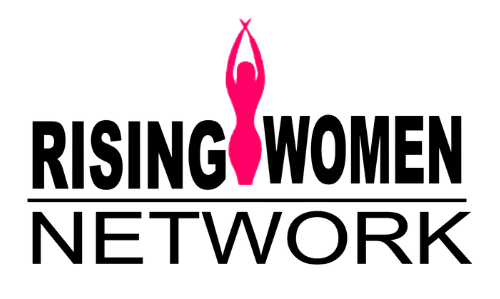No matter in what industry you operate your business or organization, trends always evolve and change. To stay ahead of the competition and remain relevant, it is important to ensure your brand, products and services also follow the industry’s trends. Your current and potential future customers want the latest in products and services, so if you are not offering the best out there, they likely will head over your competitors.
Brands must change to stay consistent yet they must also remain recognizable in order to preserve brand equity. So what should you change to keep your brand current, and when?
For the purposes of this discussion, let’s put to one side the massive rebrands that take place when a brand decides to shift ground significantly, and confine ourselves to the tweaks and improvements that brands need to regularly undertake to stay current in the iterative economy.

I think there are three critical pace-setters: the speed of change that consumers expect; the speed of change within the sector itself; and of course, the speed of change of your competitors. At the very least, brands need to keep up with those around them. Leaders though will want to set a pace – faster or slower – that works to their advantage.
In fast-moving sectors like technology, where consumers are always looking for something new, those changes are likely to be small and regular. In sectors that are forward-looking, brands need to be news makers and conversation starters not just to retain top-of-mind but to increase their authority as a brand to watch. In sectors where the pace of change is more measured and risk-conscious, particularly in B2B environments, it’s important to show why changes are being made, what they signal and how the shift will affect buyers. Whereas fast-moving brands focus on what is to be gained, those in more conservative sectors often need to frame their messages about what will be retained.
[magicactionbox id=”241″]
Every brand should be checking its toolbox as the business plan is updated to ensure that the brand matches shifts of emphasis in the business. This can be particularly important if the business makes diversification or expansion decisions that require the brand to alter what it signals to the market in terms of things like personality or price. Never underestimate the power, for example, of visual telegraphs.
And of course every brand competes within a context, so it’s critical that brand managers consistently evaluate their brand against the campaign and branding signals of their rivals. They must then decide whether to match, beat or ignore any important shifts in style, emphasis or message.
On this basis, here are seven simple ways to regularly check that your brand is keeping pace:

Offer – do consumers want what your brand means to them? That’s about more than just the products themselves. It’s about the associations that consumers pin on the brand beyond what it is/does. The success of McDonald’s all-day breakfast offer plays on the fact that breakfast at McDonald’s for fans is something they’d look at across the day. It’s a change – but it’s one that sits well with consumer associations. On the other hand, if you’re Coke for example, what do you need to be thinking about in terms of how you brand your products given that consumers are increasingly health-conscious? Do you emphasize smaller portions, do you tweak the ingredients to make them more natural or do you use advertising to focus on the me-only moment of drinking a bottle of Coke? The counter-argument to a consumer concern is not always direct. Sometimes it’s about redirecting buyer attention, either to shift the emphasis away from your own point of weakness as a brand or to detract from a key strength of one of your competitors.
 Aesthetics – updating colors, fonts and imagery is a simple way to sharpen your brand image without compromising its inherent recognition. Many of these changes can be so subtle that they go unnoticed by buyers. Unconsciously though they enable a brand to keep pace with consumers’ shifting ‘brand eye’ so that the brand always looks sharp and contemporary. But as Uber and many others have discovered, take these changes to the point where people find it hard to ‘find’ the brand they think they know and the backlash will be significant.
Aesthetics – updating colors, fonts and imagery is a simple way to sharpen your brand image without compromising its inherent recognition. Many of these changes can be so subtle that they go unnoticed by buyers. Unconsciously though they enable a brand to keep pace with consumers’ shifting ‘brand eye’ so that the brand always looks sharp and contemporary. But as Uber and many others have discovered, take these changes to the point where people find it hard to ‘find’ the brand they think they know and the backlash will be significant.
 Personality – if the business plan calls for the brand to make changes in who it appeals to or how, changing the personality of the brand is a simple way to alter the brand character without changing what people look for. My own view is that brands should keep the core elements that consumers look for as stable as possible (unless they want to signal radical change) and use to changes in campaign aesthetic and personality to give the brand an ongoing sense of progression, intrigue and excitement. The key discipline here is to make these changes within the current DNA of the brand. Too often, brand managers look to shift the personality in response to a competitor or a personal preference and the shift clashes with what consumers feel they know. I always like to think of personality development as a gradual revelation – as the things consumers come to see in a brand (alongside changes in product offer) as they get to know it better. Too many brands change personality with every campaign because managers have allowed the brand to be defined by the campaign, and not the other round.
Personality – if the business plan calls for the brand to make changes in who it appeals to or how, changing the personality of the brand is a simple way to alter the brand character without changing what people look for. My own view is that brands should keep the core elements that consumers look for as stable as possible (unless they want to signal radical change) and use to changes in campaign aesthetic and personality to give the brand an ongoing sense of progression, intrigue and excitement. The key discipline here is to make these changes within the current DNA of the brand. Too often, brand managers look to shift the personality in response to a competitor or a personal preference and the shift clashes with what consumers feel they know. I always like to think of personality development as a gradual revelation – as the things consumers come to see in a brand (alongside changes in product offer) as they get to know it better. Too many brands change personality with every campaign because managers have allowed the brand to be defined by the campaign, and not the other round.
 Language – this point relates to both offer and personality. What you talk about as a brand and the manner in which you do so is increasingly important. It enables you to signal clear points of view to consumers that stand you apart and that consumers find intriguing. Think Diesel’s “Be Stupid” campaign: a glorious example of using a manifesto approach to redefine what a clothing brand can mean for buyers. Language is a particularly powerful mechanism for challenger brands – it enables them to change target quickly and crisply and to enhance their brand presence in the process. Likewise, in B2B, language enables thought leaders to position themselves as manufacturers of ideas that will add value and change performance. Again, the contrast between the dependable brand and a stream of new approaches must be well thought through if the brand is to avoid trying to look like it is trying to talk about everything to everyone.
Language – this point relates to both offer and personality. What you talk about as a brand and the manner in which you do so is increasingly important. It enables you to signal clear points of view to consumers that stand you apart and that consumers find intriguing. Think Diesel’s “Be Stupid” campaign: a glorious example of using a manifesto approach to redefine what a clothing brand can mean for buyers. Language is a particularly powerful mechanism for challenger brands – it enables them to change target quickly and crisply and to enhance their brand presence in the process. Likewise, in B2B, language enables thought leaders to position themselves as manufacturers of ideas that will add value and change performance. Again, the contrast between the dependable brand and a stream of new approaches must be well thought through if the brand is to avoid trying to look like it is trying to talk about everything to everyone.
 Embrace change – Change can be difficult, but it is often beneficial. As mentioned at the beginning of this article, trends evolve, so you and your brand also need to evolve. Introduce new products or services from time to time, stay consistent while making room for novelty and innovation while ensuring a good balance. If you see a new trend that would apply well to your business, get ahead of the competition and start working on how to include this trend in your business.
Embrace change – Change can be difficult, but it is often beneficial. As mentioned at the beginning of this article, trends evolve, so you and your brand also need to evolve. Introduce new products or services from time to time, stay consistent while making room for novelty and innovation while ensuring a good balance. If you see a new trend that would apply well to your business, get ahead of the competition and start working on how to include this trend in your business.
Change will also ensure that your business remain relevant in the eyes of your customers and can compete in the industry. Ensure that relevance by updating your website, be present offline and online, and staying consistent. Use your ideas and creativity to embrace change in a positive way for you, your business and customers.
 Interaction – in this increasingly-on world, broadening where and how consumers can interact with their favorite brands is an opportunity more brand managers need to keep an eye on. It’s not just about adding channels. It’s about making those new channels as fit for purpose as possible and then streaming them to consumers in ways that align with who the brand is and what it stands for. Burberry, for example, have looked to shorten the distance between catwalk and purchase by making it far easier and faster for fans to see and buy. Equally, we’re now seeing traditionally online brands establishing bricks and mortar to diversify customer interactions with their favorite digital brands. By adding a physical presence, these brands are literally looking to change how they make their presence felt.
Interaction – in this increasingly-on world, broadening where and how consumers can interact with their favorite brands is an opportunity more brand managers need to keep an eye on. It’s not just about adding channels. It’s about making those new channels as fit for purpose as possible and then streaming them to consumers in ways that align with who the brand is and what it stands for. Burberry, for example, have looked to shorten the distance between catwalk and purchase by making it far easier and faster for fans to see and buy. Equally, we’re now seeing traditionally online brands establishing bricks and mortar to diversify customer interactions with their favorite digital brands. By adding a physical presence, these brands are literally looking to change how they make their presence felt.
 Listen to your audience – At first read, this directive can be construed as nothing more than common sense. But not everyone knows what it means to really listen to your audience: having a native understanding of the platforms where your customers are having open, candid conversations, keeping a close eye on your analytic, and not being afraid to take the risk of putting the customer first.
Listen to your audience – At first read, this directive can be construed as nothing more than common sense. But not everyone knows what it means to really listen to your audience: having a native understanding of the platforms where your customers are having open, candid conversations, keeping a close eye on your analytic, and not being afraid to take the risk of putting the customer first.
Consider the example of Netflix, who went so far as to let its users guide its content delivery model. By keeping tabs on their users’ viewing habits, Netflix discovered the burgeoning trend of “binge-watching” and so made the decision to release all thirteen episodes of its first original series House of Cards at once. This bold move not only provided Netflix with great publicity and cemented its reputation as a risk-taker — it was also a huge hit among its customer base.
There is nothing to signal that consumer attention spans will lengthen any time soon. In fact, probably the opposite. We talk a lot about change is a given today, but that doesn’t mean that everything must change because, when it does, consumers lose the reference points they depend on to make fast decisions. My rule is simple: change what you should; keep what you must.
[magicactionbox id=”241″]


